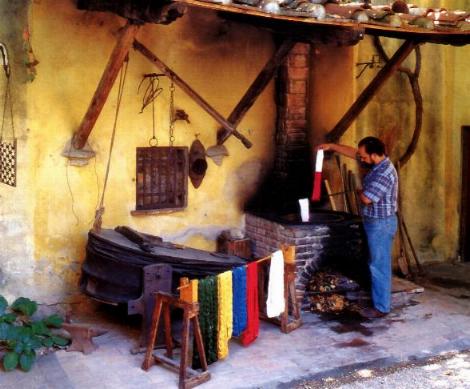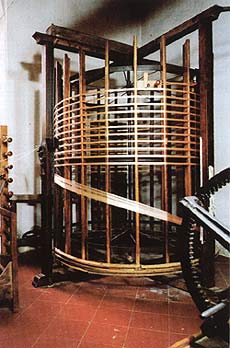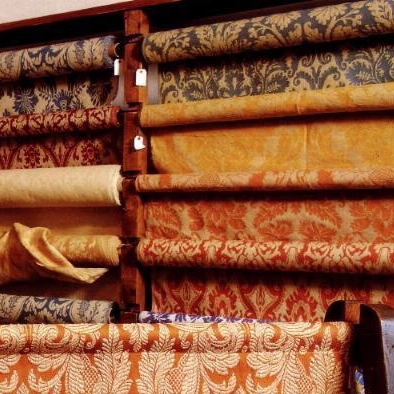“Il privilegio della lentezza” or “the luxury of going slowly” is the creed of the artisans at the Antico Setificio Fiorentino says director Sabine Pretsch. Seemingly untouched by time, workmanship characteristic of the Renaissance is central to this small Florentine silk fabric workshop. Any visitor will linger in this unhurried, magical place tucked deep inside a historic garden in the San Frediano district of Florence, Italy, where the looms are centuries old and the detailed patterns for the silken cloth are older still.

Noble Renaissance families made their fortunes through the manufacture and trade of fine silks. In the mid-eighteenth century, some of these families decided to create a single workshop to combine their looms, warping machines, patterns, and fabric designs. Located first on Via de’ Tessitori (“Street of the Weavers”) and then moved in 1786 to its present location on Via Bartolini, the silk workshop has never ceased operation, even when the roof was destroyed by bombs in World War II or when the workshop and storerooms were devastated by seven-foot flood waters in 1966.

Today, the Antico Setificio operates with eight master weavers and two apprentices — all, but one, are Florentine by birth. The factory obtains raw spun silk primarily from Brazil. The silk is hand-dyed at the workshop, wound onto spools on a machine built in the 1850s, from which the thread is then transferred to quills for the shuttles or onto an orditoio (warping machine), one of which was designed by Leonardo di Vinci and the other is an 1872 Benninger orditoio — both are in perfect working order. Six handlooms from the eighteenth century and six mechanical nineteenth-century looms are used to create fabrics from patterns dating back to the Renaissance.

Today, the production of the Antico Setificio Fiorentino is rarely made into fashionable clothing. Instead, the fabric is used for the interior decoration of private homes and public buildings or the restoration of historic costumes, drapery and furniture. Visitors are welcome in la sala di vendita (salesroom) where rolls of richly colored and patterned silks vie for space with finished products made of the supple fabric.

Recently the workshop began working with modern textile designers to develop new patterns using the antique handlooms to create unique fabrics. The skill of Setificio artisans and the use of the eighteenth-century handlooms assure the superior quality of the modern fabric — a direct result of “the luxury of going slowly.”
For more information, contact Antico Setificio Fiorentino, Via Bartolini 4, 50124 Florence, Italy.
An excellent book, published in Italy, entitled “Antico Setificio Fiorentino” by Sabine Pretsch and Patrizia Pietrogrande, published by Le Lettre, Firenze 1999, has English translation included.
